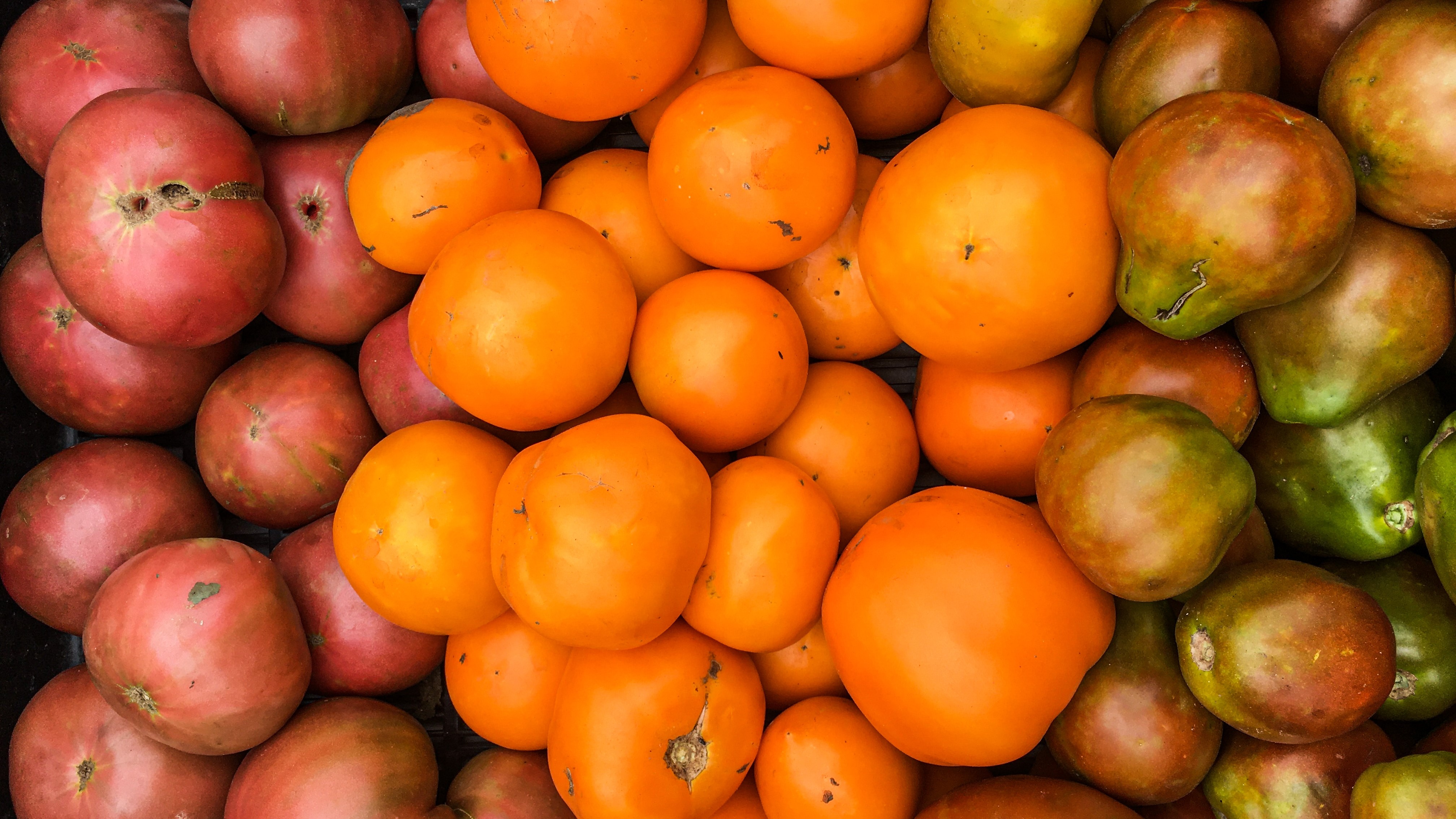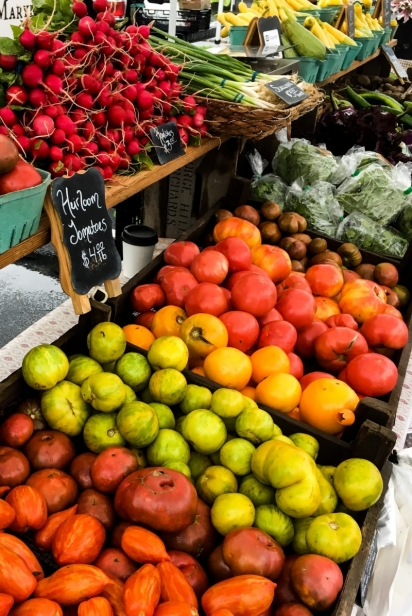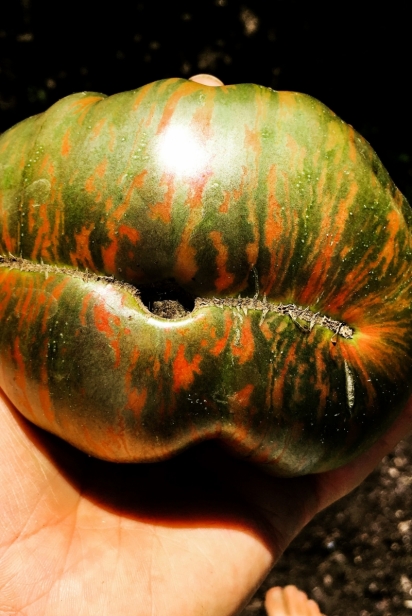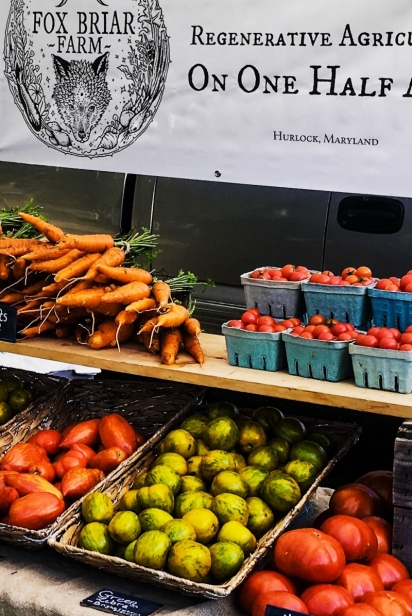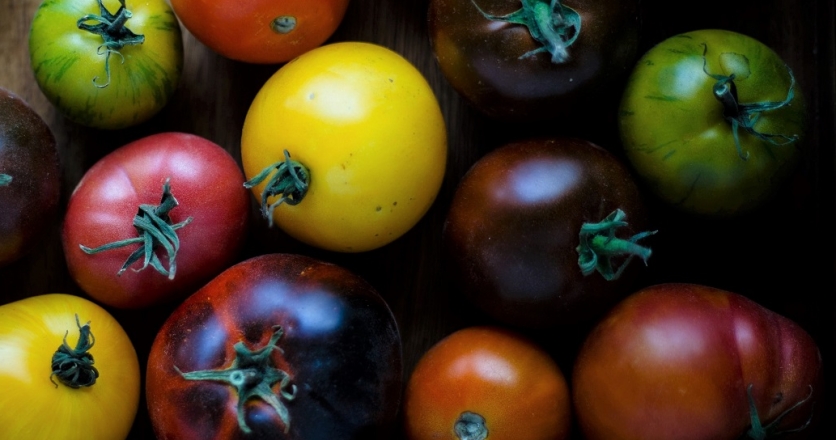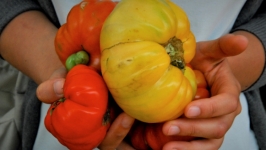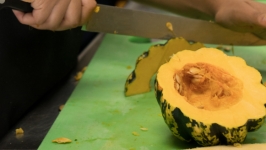Summer's Heritage: A Guide to Heirloom Tomatoes
Daniel and Kathleen Moss, of Fox Briar Farm in Hurlock, Maryland, offer some firsthand advice for shopping the markets for heirloom tomatoes
Although I’ve sold behind a farmers’ market table in every season, there is a unique energy to a summer market that is unmatched during the rest of the year. Who can resist the pull of fresh blueberries, peaches, eggplant, and zucchini? Even tourists from neighboring states will take time out of their vacations to shop at seaside markets like the ones in Rehoboth and Bethany Beach.
If summer is the crown of the farmers’ market season, the heirloom tomato stands as one of its most prominent jewels. While most of us have been trained from childhood to imagine tomatoes as plump, red balls, a quick glance around a summer market or CSA pickup would suggest otherwise. Heirloom tomatoes are a kaleidoscope, covering a wide spectrum of colors, shapes, sizes and flavors. With such attractive variety, many customers are simultaneously lured and confounded in the selection process. What exactly is an heirloom tomato, and how can you pick the perfect fruit for your summer meal?
As the name attests, an heirloom fruit or vegetable is one that has been passed down through the generations. While exact age qualifications vary, heirloom breeds are generally ones that have been grown since before the Second World War. The seeds from heirloom tomatoes have been saved and planted, year after year, because of taste and regional tradition. Quite simply, most agree that heirloom tomatoes taste better than the hybrid varieties widely available at the supermarket. Admittedly, we do grow a few beds of hybrid tomatoes on our farm every year, but the benefits are primarily related to uniformity, durability, and yield. Heirloom tomatoes, on the other hand, will delight with a range of unique flavor profiles.
Buying Guide
In my twelve years behind a market table, I have been asked just about every vegetable question under the sun. One of the most common, however, is how to choose an heirloom tomato. The existence of thousands of heirloom types can feel both exciting and intimidating. If every variety tastes different, how can you be sure that you are buying the right one for your particular meal? What about ripeness? If a green tomato is the traditional sign of immaturity, how do you judge a fruit like the Green Zebra? Unfortunately, a common method amongst market shoppers is squeezing a tomato to judge firmness. This technique has unintended consequences that the customer often never sees. Squeezed fruit bruises or even breaks, leaving unsellable tomatoes destined for the compost pile. One farmer friend on the Eastern Shore of Virginia became so frustrated by this cycle that she prominently posts a “You squeeze it, you buy it” sign on her market table during the summer months.
Instead of firmness, focus on color saturation. The brighter and more vibrant the color, the riper the tomato will be. The color in an unripe tomato will be dull and matte, but it will take on a gloss and sheen as it ripens. Turn the tomato over to look at its shoulders, the area directly bordering the stem scar. The shoulders will be the last place on the tomato to turn. That being said, some varieties actually stay green on the shoulders. If you aren’t familiar with a particular variety, it will only take a few seconds to look up pictures for reference on your smartphone. See the chart accompanying this article for examples of common heirloom types. That being said, don’t be afraid to buy an unripe tomato. Heirloom tomatoes continue to mature off the vine, so it will perfect in time. If you have the resources, the best strategy is to buy a few tomatoes at different stages.
Finally, if in doubt, don’t hesitate to ask the farmer behind the table. Most will be happy to give advice and recommendations based on their own tastes. Avoid asking for overly specific timelines. If you want a perfectly ripe slice for a sandwich at afternoon tea in three days, the vendor will only be able to provide an educated guess.
Heirloom Reference Chart
Here we group some of the more common varieties of heirloom tomatoes by color family, and try to make some broad generalizations about their flavor profiles. Take this guide as a starting place, but the world of heirlooms is so broad there will be plenty of examples that run counter to our categories. We hope you find some new varieties and flavors at market this summer, and possibly a new favorite tomato.
Color Family: Red
Common Varieties: Druzba; Nepal; San Marzano
Flavor Trends: Robust, earthy, and well balanced
Color Family: Pink
Common Varieties: Brandywine; Pruden’s Purple; Mortgage Lifter
Flavor Trends: Classic tomato flavor, with a good balance of sweetness and acidity
Color Family: Orange
Common Varieties: Valencia; Kellog’s Breakfast; Striped German
Flavor Trends: Mild, sweet, and low acid but with a sunny disposition. Sometimes even fruity.
Color Family: Yellow
Common Varieties: Yellow Brandywine; Great White
Flavor Trends: Tend to be the lowest in acidity. Mild and pleasant. Depending on your tastes they can be the sweetest, or the blandest of the heirlooms.
Color Family: Green
Common Varieties: Green Zebra; Cherokee Green
Flavor Trends Bright and zippy, acidic in the best way. Often with citrus notes.
Color Family: Purple or black
Common Varieties: Cherokee Purple; Carbon; Japanese Black Trifele; Pink Berkeley Tie Dye
Flavor Trends: Dynamic, rich, and smoky. Less acidic than pink/red tomatoes. To be savored like a fine wine.


